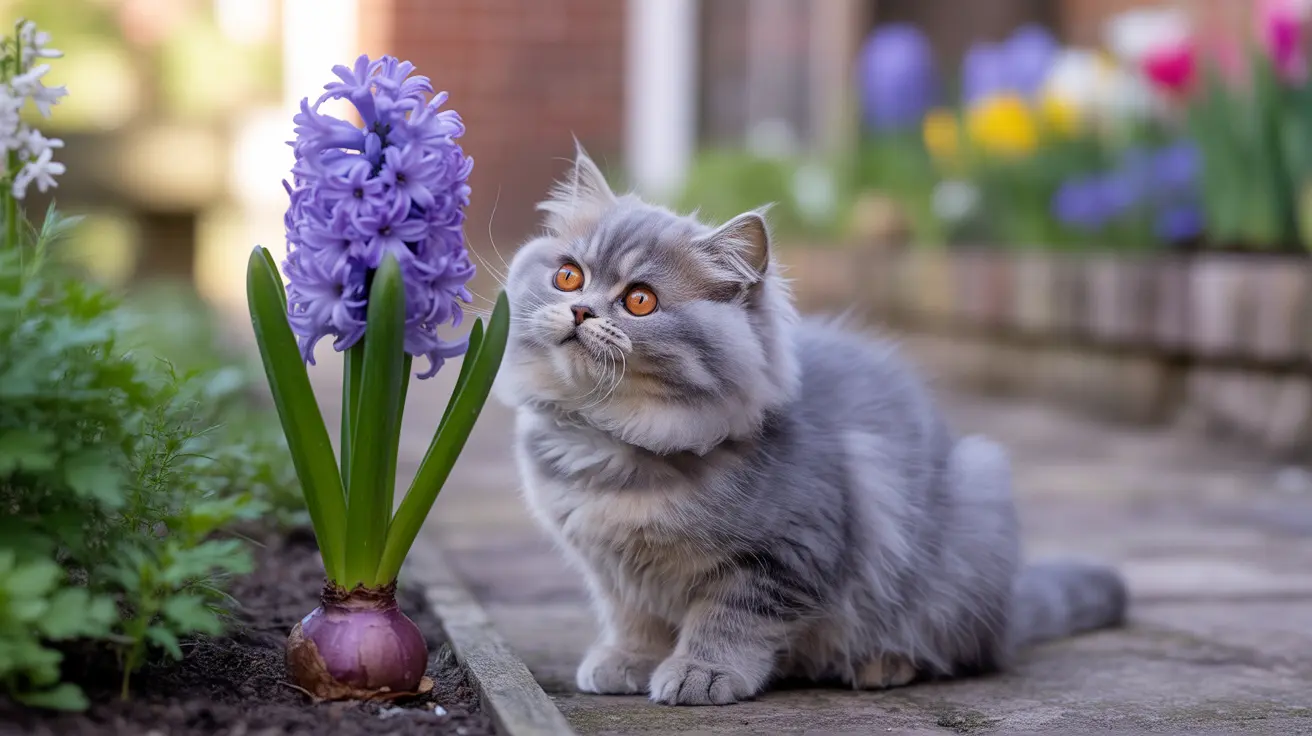As spring blooms arrive in gardens and homes across America, it's crucial for cat owners to understand the dangers that certain plants pose to their feline friends. Hyacinths, while beautiful and fragrant, are indeed toxic to cats and can cause serious health issues if ingested or even touched.
This comprehensive guide will explore the risks hyacinths present to cats, identify warning signs of poisoning, and provide essential information for keeping your pet safe.
Understanding Hyacinth Toxicity in Cats
Hyacinths contain two dangerous compounds: lycorine (an alkaloid) and calcium oxalate crystals. These toxins are present throughout the entire plant, with the highest concentration found in the bulbs. When a cat chews or ingests any part of a hyacinth, these compounds can cause immediate irritation and potentially severe health complications.
Most Dangerous Plant Parts
While the entire hyacinth plant is toxic, the bulb poses the greatest risk to cats. Cats who dig up and chew on bulbs are exposed to concentrated levels of toxins that can lead to severe poisoning. Even casual contact with leaves, flowers, or plant sap can trigger adverse reactions in sensitive cats.
Recognizing Symptoms of Hyacinth Poisoning
Immediate Signs
The first symptoms typically appear within hours of exposure and may include:
- Excessive drooling
- Pawing at the mouth
- Vomiting
- Oral irritation
- Difficulty swallowing
Severe Symptoms
More serious cases of hyacinth poisoning can lead to:
- Severe gastrointestinal upset
- Respiratory difficulties
- Increased heart rate
- Tremors
- Lethargy and weakness
Emergency Response and Treatment
If you suspect your cat has been exposed to hyacinths, immediate action is crucial. Contact your veterinarian or the Pet Poison Helpline right away. Do not attempt to induce vomiting unless specifically instructed by a professional, as this could cause additional harm.
Treatment Protocol
Veterinary treatment typically includes:
- Decontamination procedures
- IV fluid therapy
- Supportive care for symptom management
- Monitoring of vital signs
- Administration of anti-nausea medication if needed
Prevention and Safety Measures
The best approach to hyacinth poisoning is prevention. Consider these essential safety measures:
- Keep hyacinths out of your home if you have cats
- Create cat-free garden zones for toxic plants
- Use physical barriers to prevent access to hyacinth plants
- Consider pet-safe alternatives for spring decorating
Frequently Asked Questions
Is hyacinth toxic to cats and which parts of the plant are most dangerous?
Yes, hyacinths are toxic to cats. While all parts of the plant are poisonous, the bulbs contain the highest concentration of toxic compounds and pose the greatest risk to cats.
What symptoms should I look for if my cat has ingested hyacinth?
Watch for drooling, vomiting, diarrhea, oral irritation, pawing at the mouth, lethargy, and difficulty breathing. Severe cases may include tremors and increased heart rate.
How should I treat or respond if my cat eats hyacinth bulbs?
Contact your veterinarian or Pet Poison Helpline immediately. Don't induce vomiting without professional guidance. If possible, bring a sample of the plant to aid in diagnosis.
Can inhaling the scent of hyacinths harm my cat or cause allergic reactions?
While rare, some sensitive cats may experience mild respiratory irritation from the strong scent of hyacinths. It's best to keep these plants away from areas where cats spend time.
What preventive steps can I take to keep hyacinths safe from my cats at home?
Remove hyacinths from your home and garden, or create designated pet-free areas for these plants. Use physical barriers when necessary and consider pet-safe alternatives for decoration.
Remember, when it comes to your cat's safety, it's always better to err on the side of caution. If you're unsure about a plant's safety, consult your veterinarian or choose from the many pet-safe alternatives available for your home and garden.






